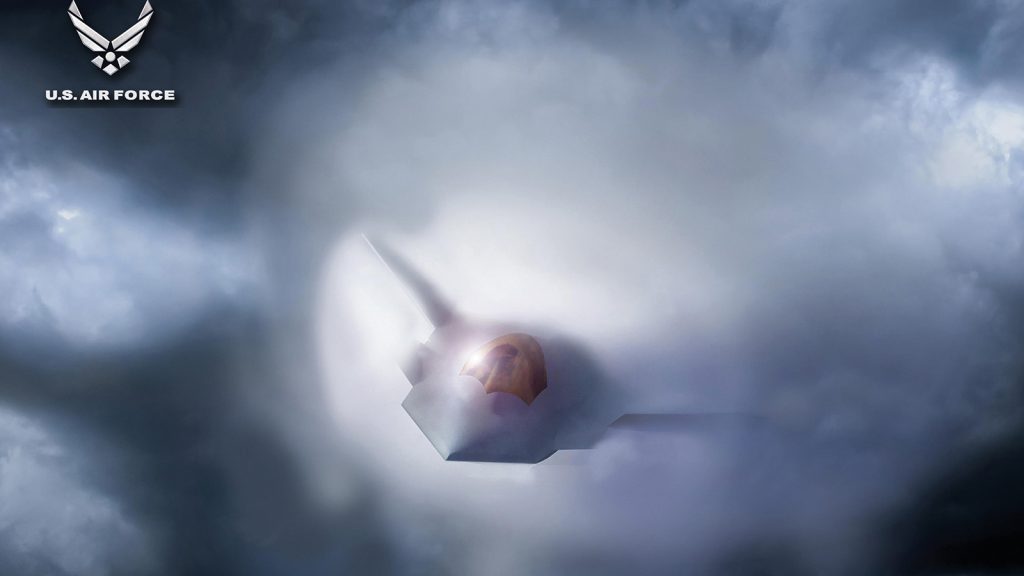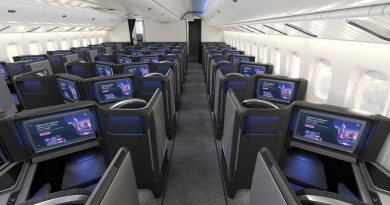The Future of Air Dominance: The Integration of Manned and Unmanned Aircraft
For the past 24 years, Alderman & Company has served as sell-side M&A Bankers in the middle market of Aerospace & Defense. Approximately half of our engagements during this time have involved companies within the U.S. defense industrial base. Drawing on our industry perspective, this article explores how middle-market firms that are aligned with the development of next generation military networks are well positioned for the coming years.
Military aviation networks are undergoing a generational shift, moving from centralized commands to distributed communication networks of manned and unmanned systems. This change is being achieved through the development of modern communication technologies that enable interaction between sixth-generation fighters, UAVs, and retrofitted legacy aircraft.
This shift is evident in the evolution of the fighter jet. Fifth-generation platforms like the F-35 and F-22 introduced stealth, sensor fusion, and network-centric warfare. Sixth-generation programs are expected to go further. Programs such as the NGAD are incorporating decentralized networks, artificial intelligence, directed energy weapons, and UAV integration through advanced avionics.
To bridge the gap between legacy and future systems, retrofitting existing fighters with modern avionics and electronics will also be required to utilize legacy aircraft in these emerging networks. This enhances interoperability and extends the operational relevance of older platforms within a networked battlespace.
UAVs are rapidly expanding their roles within the future of warfare. As low-cost, and in many cases disposable, UAVs offer an efficient solution for Intelligence, surveillance and reconnaissance (ISR).
Middle-market aerospace and defense companies supporting next-generation technologies—such as AI-driven avionics, secure communications, energy weapons, UAV platforms, and retrofit solutions—are helping shape the future of defense. As the defense industrial base evolves, these firms are well-positioned for long-term growth.
Current Trends in 5th-Generation Fighters
5th-generation fighter aircraft, such as the Lockheed Martin F-35 Lightning II and Lockheed Martin/Boeing F-22 Raptor, have become the mainstay for modern air combat with advanced stealth, sensor fusion, and networked warfare capabilities. As of January 2025, Lockheed Martin has delivered more than 1,100 F-35 aircraft all time, including 110 in 2024 . 195 F-22 aircraft have been delivered all time. The F-22 stopped production in December of 2012.
The supply chain for these platforms is extensive, with Lockheed Martin leading the F-35 program, supported by Northrop Grumman (sensor systems), BAE Systems (electronic warfare components), and Pratt & Whitney (F135 engine) . The F-22, developed by Lockheed Martin and Boeing, integrates avionics from Raytheon and Northrop Grumman, with Pratt & Whitney supplying its F119 engines.
The supply chain complexity has extended beyond the primes. Stealth and survivability requirements, achieved through composite materials, radar-absorbent coatings, and low-observable airframes that reduce detection by enemy radar and infrared sensors rely on specialized middle market suppliers. Many of these companies are small, privately owned enterprises with 50-500 employees. Of note, these are the primary clientele of Alderman & Company. These companies provide critical materials, precision manufacturing and sustainment services that enable these aircraft’ capabilities. The demand for such support has continued over recent years as these aircraft remain central to U.S. air dominance.
While more than 1,100 F-35s have been built, the 5th generation fighter F-22 had only 200 units produced, and current plans are for the United States to build just 200 F-47s
Demand for 6th-Generation Fighters
Boeing recently won the US 6th generation fighter program with its F-47, also known as the Next-Generation Air Dominance (NGAD) program. The NGAD marks a critical leap forward in air superiority, pushing the boundaries of fighter aircraft well beyond the capabilities of 5th-generation platforms like the F-35 and F-22. The NGAD program is set to introduce groundbreaking technologies, including artificial intelligence (AI), directed energy weapons, and connectivity with unmanned aerial vehicles UAVs (referred to in this context as Collaborative Combat Aircraft – CCAs) and ground assets. The introduction of these advanced systems will change the way combat is fought, with 6th-generation fighters and their CCAs playing a central role in future multi-domain operations and maintaining U.S. air dominance.
Of note, another major demand signal for sixth-generation fighters and their associated UAVs outside the U.S. is the Global Combat Air Programme (GCAP), a joint initiative between the United Kingdom, Japan, and Italy. The program combines the UK’s Tempest and Japan’s F-X projects into a unified sixth-generation fighter development effort. Like the U.S. CCA, GCAP will include uncrewed aircraft designed to perform support functions alongside manned aircraft. BAE Systems, Mitsubishi Heavy Industries, and Leonardo are leading the initiative.
Opposed to its 5th generation predecessors, which typically rely on a single platform’s capabilities, the F-47 is envisioned as part of a highly networked system, where human-piloted aircraft and CCAs work together in coordinated operations. The F-47’s design incorporates advanced stealth features, next-generation propulsion systems, and a flexible sensor suite that can quickly adapt to emerging threats. The aircraft will enhance operational efficiency by providing a seamless interface between few manned aircraft and many unmanned systems. Boeing is driving the development of the F-47, while Lockheed Martin plays a complementary role in advanced stealth technologies and sensor integration for the program.
While the capabilities of the 6th generation fighter will maintain U.S. air dominance, the supply chains that previously supported the large quantity of F-35 and F-22 aircraft will likely shift to include new demand for the 200 6th generation fighters and the associated 1,000 CCAs projected to be produced. We have worked with many clients who have worked on both the F35 program and F22 programs and as a result we have a deep appreciation for the differences between being a supplier on a 200-unit program versus a 1,000-unit program. While the cost per unit for the F-47 will dwarf that of each associated CCA, we expect suppliers will be as keen to win work on the CCAs as they will be on the F-47.
The Role of UAVs in NGAD and 6th-Generation Operations
UAVs are already a significant component of modern warfare. These systems have grown in sophistication and versatility, supporting missions that range from intelligence, surveillance, and reconnaissance (ISR) to targeted strikes. As part of the NGAD program, CCAs, under development, will dramatically enhance the capabilities of the F-47. We expect these new CCAs will be designed based on recent lessons learned from such systems as Anduril’s Fury and General Atomics’ GA-ASI XQ-67 . We expect these CCAs will be in very high demand in the future, because of the command capabilities of the 6th generation aircraft and the fraction of fighters that will be required, compared to these CCA systems that enable the achievement of air dominance at much lower total cost.
From FY2025 to FY2029, NGAD funding is projected to rise from $2.75 billion to $5.72 billion—a 108% increase. Contemporaneously, CCA is expected to grow from $557 million to $3.11 billion, marking a more than 450% increase over the same period. This rapid acceleration reflects the Department of Defense’s emphasis on fielding large numbers of cost-effective, autonomous systems to complement a small fleet of sixth-generation fighters. As a result, CCAs are expected to drive greater unit volume and sustained demand across the defense industrial base. This provides significant opportunities for middle-market suppliers that provide critical components, manufacturing, and integration services to support this expanding UAV and CCA ecosystem.
As the NGAD program accelerates, tier 1 suppliers (such as Raytheon Technologies and L3Harris Technologies) will start building subsystems that will enable NGAD’s electronics, communications and networks. For middle-market suppliers already supporting these OEMs, the increasing demand for high-performance defense electronics and secure communications points to a clear, sustained growth opportunity. We are seeing this firsthand, as Alderman & Company is currently in the process of selling companies in this exact niche. The supply chains involved in the development of these CCAs will push to design for greater efficiency and endurance. These next-generation CCAs under the NGAD program will feature advanced engine technologies that reduce fuel consumption while improving performance at higher altitudes. This integrated platform (F-47s with CC will allow precision strikes with fewer resources, reducing the risk to human pilots, and save both lives and money, while pushing US air dominance into the next level.
The Shift in Production and Retrofitting Trends
The modernization of military aircraft has become a priority for many air forces around the world, not just the US, as they seek to extend the lifespan of their existing fleets rather than producing all new and expensive platforms (such as NGAD). This shift toward retrofitting older aircraft with next generation avionics, communications, radar systems, and electronic warfare (EW) capabilities allows military forces to maintain the operational relevance of legacy platforms at a fraction of the cost of purchasing new aircraft.
State-of-the-art in this context refers to the integration of cutting-edge technology into both new and existing aircraft. These kinds of upgrades can provide enhanced capabilities in areas like radar, communication, and navigation, which are essential for successful multi-domain operations. These updates enable older platforms to engage in more advanced combat scenarios and better integrate with next-generation systems, such as the NGAD F-47 and its associated CCAs’.
Demand for retrofitting legacy aircraft is evident in programs like the B-52 Commercial Engine Replacement Program (CERP), which has transitioned from mid-tier acquisition to a Major Capability Acquisition. The Air Force has requested $3 billion for B-52 procurement through 2028, including over $1.1 billion annually in 2027 and 2028. Within that, the Radar Modernization Program (RMP) accounts for $845.9 million, with procurement peaking at $271.95 million in 2027 to fund 74 radar kits and related systems. Alderman & Company is keenly aware of the impact these legacy upgrades can have on middle market suppliers. We are currently selling a company that manufactures components in this market. These upgrades not only enhance the B-52’s capabilities but also drive sustained demand for middle-market suppliers specializing in state-of-the-art retrofits—highlighting a broader industry trend as modern avionics, communications, and radar technologies are increasingly integrated into legacy platforms to ensure interoperability with NGAD .
How Future Military Networks Will Operate: Lessons from Ukraine and Gaza
The ongoing conflicts in Ukraine and Gaza have showcased the evolving nature of UAV warfare strategies, particularly in asymmetric warfare situations.
Ukraine’s use of UAVs has been significant, with various drones deployed for ISR, strike, and electronic warfare. UAVs like the Turkish Bayraktar TB2, developed by Baykar Technologies, have played a crucial role in Ukraine’s efforts against Russian forces. The Bayraktar TB2 is capable of precision strikes with guided munitions, and its ability to perform at long ranges has made it an effective tool for Ukraine in disrupting Russian operations.
In addition to the Bayraktar TB2, Ukraine has also deployed Switchblade drones, a type of loitering munition made by AeroVironment, which are used to target Russian vehicles and artillery. These UAVs have proven effective in disrupting supply lines and command posts, showcasing how smaller, more cost-effective UAVs can challenge superior air forces.
For suppliers in aerospace and defense industrial base, these conflicts provide a critical signal about the future of warfare. They reflect a broader transformation, where UAVs are reshaping how military operations are conducted. As the U.S. defense industrial base responds to these changes, there will be sustained demand for the technologies that make this shift possible—advanced communications, secure and fast networks, and cost-effective UAV platforms. The operational lessons from Ukraine and Gaza highlight the importance of UAVs in future combat. As we are seeing in our practice, middle market suppliers are becoming keenly aware of this shift and are focusing their resources on supporting both traditional aircraft platforms as well as these as up and coming UAV and CCA platforms.
New Players in Military Aircraft
In this evolving market, we see new entrants. Palantir and Shield AI developed a secure technology package demonstrated on the unmanned V-Bat and MQM-178 Fire Jet and manned F-16. This technology, based on Shield AI’s Hivemind autonomous flight software, combined with Palantir’s battlefield intelligence system, has proven its capability in enabling manned aircraft to control autonomous uncrewed systems (CCAs) .This exactly the kind of technology that the US Department of Defense is looking for, to facilitate the NGAD program and enable the F-47 manned aircraft to control a fleet of CCAs.
The growing investment in this kind of on-board technology for defense is another clear signal to middle market suppliers: the future of military air dominance will include computing and networking capabilities like those emerging from the Palantir–Shield collaboration
Conclusion
In the near future, military air dominance will require large numbers of CCAs and UAVs. These unmanned aircraft will require secure, high-speed data sharing between different military assets to ensure coordinated and efficient air dominance. The future of air dominance will not be dictated by individual aircraft capabilities alone, but by how effectively manned fighters and unmanned aircraft (CCAs and UAVs) can communicate and operate as a single, unified force.
And regarding older/legacy manned aircraft, modernization (to enable those aircraft to be “in the network”) will require substantial investments into cutting-edge avionics, fast computing and secure communication. These retrofits are becoming a core strategy for the US and other military forces looking to maximize combat effectiveness and cost efficiency. By making these upgrades legacy aircraft can be integrated into modern battle networks, extending their operational life and maintaining their relevance in the age of future warfare.
The US DoD’s budget priorities for NGAD (and its CCAs) and legacy aircraft upgrades present a significant opportunity for middle market companies in the defense industrial base. With only about 200 NGAD aircraft expected to be built, the initial plan is to build 1,000 CCAs and we expect there may be many more, as their cost effectiveness is realized. Middle-market suppliers should pay attention to these evolving changes in DoD priorities and take advantage of the substantial opportunities that lie ahead.
By Troy Medeiros, Vice President, Alderman & Company




